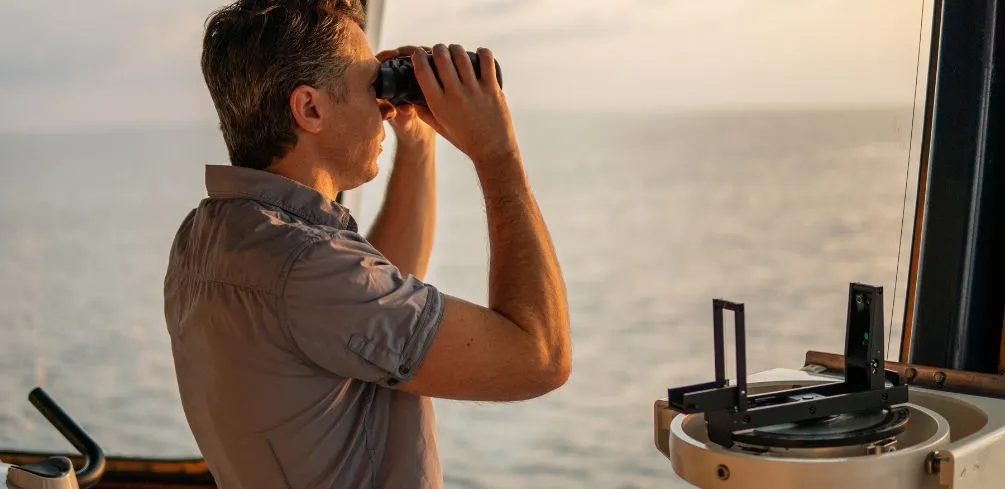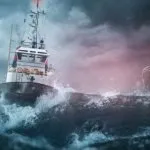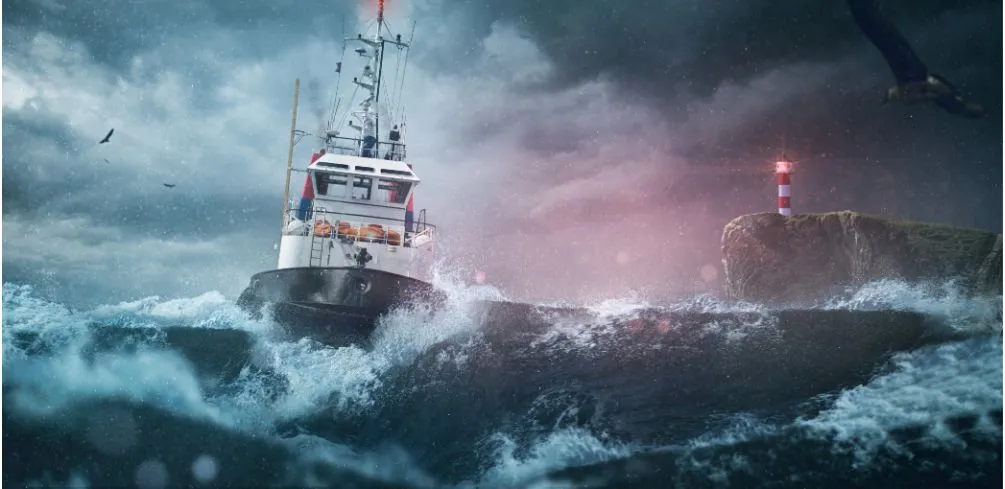Navigation safety is a major focus for anyone who travels, whether by land, sea, or air. As the world becomes increasingly connected, understanding the impact of weather on navigation safety is essential to ensure safety and security. It’s important to recognize that weather can create unpredictable conditions, which can directly affect navigation safety.
In this article, I will take a closer look at the various ways in which weather can impact navigation safety. We’ll explore why it’s so important to stay up-to-date on changing weather patterns as well as strategies for mitigating potential risks associated with hazardous weather conditions. My aim is to provide you with the knowledge necessary to navigate safely and confidently in any situation.
So if you’re looking to gain further insight into how weather affects navigation safety, then keep on reading! I’ll help you get a better understanding of the connection between weather and navigation so that you can stay informed and make sure your journeys are safe and successful.
Types Of Weather Conditions
Navigating on the open sea or in the air is one of the most challenging tasks a person can take on, and weather conditions have an enormous impact on safety. It’s like a game of chance, as you never know what kind of weather you’re going to face while traveling. Heatwaves, snowstorms, thunderstorms, foggy conditions, and strong winds can all cause significant difficulties for pilots and sailors alike.
Heatwaves are periods of extreme heat that can last for days or even weeks. They are extremely dangerous for those who travel by land or sea due to their draining effects on energy levels, which can lead to dehydration or heat stroke. On top of that, intense heat can affect electronic components and increase the risk of engine failure.
Snowstorms bring with them low visibility and slippery roads, making it difficult for drivers to see where they are going or stop safely. For sailors navigating in snow-covered waters, this creates an additional challenge as icy surfaces reflect light differently than normal seas. In addition to this, strong winds accompanying snowstorms can make sailing even more dangerous.
Thunderstorms bring with them powerful gusts of wind that can cause boats to capsize and planes to become unstable in flight. They also bring lightning that can interfere with navigation systems or damage equipment if not properly protected against static electricity buildup.
Foggy conditions present a unique challenge as they reduce visibility significantly and make it hard to determine where you are going or how far away obstacles may be located – both on land and at sea. Strong winds have the potential to push ships off course or force aircraft into unexpected turbulence patterns that could potentially cause mechanical issues if left unchecked for too long.
Weather conditions play an essential role in determining how safe it is for us to navigate our way from point A to B – no matter what mode of transportation we choose! By being aware of the types of weather conditions, we may encounter along the way. We can better prepare ourselves and ensure our safety while traveling during any season of the year.
Effects On Navigation Systems
Now that we’ve discussed the various types of weather conditions, it’s important to explore how they can impact navigation systems and pose safety risks. Weather can have both positive and negative effects on navigational aids, so it’s essential to understand how weather affects navigation safety.
Here are four ways that weather can affect navigation systems:
- Navigation systems rely on accurate weather forecasts. Navigation systems use meteorological data to provide accurate forecasts of wind speed, temperature, humidity, and other atmospheric conditions along a route. This helps pilots determine the best course for their journey, as well as any potential hazards en route. Inaccurate forecasts can lead to unexpected or hazardous conditions during the flight.
- Weather monitoring is essential for safe navigation. Monitoring instruments collect real-time data from ground stations and satellites in order to provide up-to-date information about the weather along a route. By analyzing this data, pilots can plan their journey with an understanding of the current atmosphere and adjust their plans accordingly if necessary.
- Changing weather patterns can pose a danger. As air pressure changes with changing temperatures or moisture levels, aircraft may experience turbulence or strong winds, which can make flying difficult or dangerous. Pilots must be aware of changing atmospheric conditions in order to avoid such risks while navigating safely through them if they occur unexpectedly during a flight.
- Adverse weather can limit visibility. Poor visibility due to fog, rain, or snow can limit the ability of pilots to see clearly where they are going and what obstacles may lie ahead in the path of the aircraft’s flight path. This increases the risk of collisions with other aircraft or terrain features during a flight, so pilots must be prepared for any potential risks associated with low visibility when navigating in adverse weather conditions.
From these points, it’s clear that understanding how weather impacts navigation safety is critical for successful piloting and avoiding life-threatening accidents while overflying terrain or at airports around the world where visibility may be limited due to poor atmospheric conditions at any given time.
Challenges Posed By Adverse Weather
Adverse weather can pose a significant challenge to navigation safety. Wind, rain, fog, and other conditions can make it difficult to see ahead or even recognize potential hazards. These weather effects can also affect a boat’s ability to stay on course and remain in control.
Weather-related challenges can be particularly dangerous when navigating near the coast or in shallow waters. The waves can become larger and more unpredictable, and visibility can be significantly reduced in fog. These factors can increase the chances of boat collisions, groundings, and other accidents that could lead to serious injury or death.
To reduce these risks, it is important for boaters to be aware of their environment and the current weather conditions. They should also take advantage of navigational aids such as buoys, lighthouses, and radar when available and use safety strategies such as avoiding excessive speed or maneuvering too close to other boats in adverse conditions.
By being prepared for any situation that may arise due to inclement weather, boaters can help ensure their own safety as well as the safety of those around them while out on the water.
Strategies For Minimizing Risk
When it comes to navigation safety, weather monitoring is paramount for risk mitigation. One way of doing this is by utilizing the latest technology in navigation systems. This can include anything from radar systems to satellite-based technology. Using these systems, allows us to be able to monitor changing weather conditions and make decisions accordingly.
| Key Concept | Definition |
|---|---|
| Weather Monitoring | The use of instruments and techniques to observe and record current and forecasted atmospheric conditions. |
| Navigation Safety | Actions were taken to reduce the probability or severity of a potential hazard or danger. |
| Risk Mitigation | Technologies used for route planning and tracking of vessels, aircraft, and automobiles. |
| Navigation Systems | The state of the atmosphere at a particular place and time is expressed in terms of temperature, humidity, wind speed, etc. |
| Weather Conditions | The state of the atmosphere at a particular place and time as expressed in terms of temperature, humidity, wind speed, etc. |
It’s also important to understand that if we’re aware of potential risks due to weather conditions beforehand, we can take preventive measures accordingly. This could include anything from adjusting course direction or speed when necessary or avoiding certain areas altogether if deemed necessary.
Ultimately, this will help us ensure our safety whenever traveling in any form of transportation — be it via land, sea, or air.
Having an enhanced understanding of how weather impacts navigation safety, it gives us the opportunity to always stay one step ahead when making decisions about our travels — allowing us to have peace of mind knowing that we’re taking the necessary steps toward minimizing risk in any situation.
Importance Of Monitoring Changes In Weather
It is essential to understand the importance of monitoring changes in weather in order to maximize navigation safety. Weather monitoring is the key component of risk management and the ability to identify potentially adverse conditions that may affect a vessel’s safe passage. With this knowledge, prudent mariners can take proactive measures to minimize risk and ensure navigation safety.
Weather safety begins with an understanding of the forces that govern sea conditions, including air pressure, wind speed, temperature and wave height.
A comprehensive weather forecast should include all of these factors as well as any additional relevant information such as visibility, precipitation, or thunderstorms. By staying informed about current and anticipated weather trends, boaters can make informed decisions about their voyage and prepare for any potential challenges they may face.
By using all available resources, such as local radio broadcasts, internet-based sources, or even their own observation skills, mariners are able to develop a better understanding of changing weather conditions and adopt strategies to reduce risks associated with them. This level of awareness not only keeps vessels safer but also increases confidence in navigating through adverse conditions.
Monitoring changes in the weather is an important part of maritime navigation; it helps mariners plan accordingly and allows them to respond quickly when faced with unexpected challenges. Armed with this knowledge, boaters can gain a greater sense of control over their journey and feel more confident in their decision-making process.
Ultimately, taking these steps will help ensure a safe voyage no matter what Mother Nature throws at you!
Frequently Asked Questions
What Are The Most Common Types Of Weather Conditions That Could Impact Navigation Safety?
Navigating safely in any kind of weather can be a challenge. From thunderstorms to foggy conditions, high winds to heavy rain, icy roads, and more, the risks of navigating through inclement weather are unnerving. But understanding the impact of various weather conditions on navigation safety can help make it easier to travel safely.
The most common types of weather conditions that could affect navigation safety include thunderstorms, foggy conditions, high winds and heavy rain. Thunderstorms can cause sudden changes in visibility due to lightning strikes and strong gusts of wind, which can throw vehicles off course.
Foggy conditions create a low visibility environment that makes it difficult for drivers to see what is ahead of them or even around them. Additionally, high winds can interfere with steering control, increasing the risk of an accident. Heavy rain can also reduce visibility as well as create slippery surfaces on roads that make it harder for tires to grip the road surface adequately.
Navigation safety is further impacted by icy roads, which are both dangerous and unpredictable. Icy roads make it hard for vehicles to maintain traction and can lead to skidding – especially when cornering or braking suddenly. In addition, icy roads increase the likelihood that drivers will lose control if they don’t adjust their speed accordingly or take extra precautions when navigating these treacherous surfaces.
It’s important for drivers to remember that even though these weather conditions may seem daunting, understanding their impact on navigation safety is key in helping us stay safe while traveling during inclement weather.
Taking measures like slowing down your speed, checking road reports before your journey, and being aware of your surroundings can go a long way toward ensuring successful navigation under difficult circumstances.
How Can Navigation Systems Be Improved To Better Handle Adverse Weather?
I’m sure we’ve all experienced the effects that adverse weather can have on our navigation systems. Whether it’s a sudden change in temperature, stormy conditions, or low visibility, it can make navigation much more difficult. That’s why it’s important to consider how navigation systems can be improved to better handle adverse weather conditions and improve safety for navigators.
Navigation technology has come a long way over the years, and there are now many ways to improve navigation systems when faced with adverse weather. For example, advances in weather forecasting allow us to anticipate changes in the environment, giving us an edge when navigating in dangerous areas.
We also have access to sophisticated navigation aids such as GPS and radar systems which can help provide accurate readings even during extreme weather events. By using these technologies together with traditional navigational techniques, navigators can ensure they are prepared for any weather situation they may encounter.
Finally, it is essential that navigators remain aware of their surroundings and take into account potential hazards posed by changing weather conditions. This includes being prepared for sudden changes in visibility or unexpected gusts of wind which could cause a loss of control or other incidents.
By taking these precautions and using the latest navigation technology available, we can reduce the risk associated with adverse weather conditions and increase safety for all navigators.
Are There Specific Safety Measures That Should Be Taken In The Event Of Extreme Weather?
Navigating any terrain can be a challenge, but in extreme weather conditions, it can become even more treacherous. Knowing what safety measures to take in the event of severe weather is essential for navigation safety. Extreme weather can be unpredictable and can occur suddenly, so it’s important to have an understanding of the necessary safety precautions to take during such conditions.
One of the most essential safety measures is to check the weather forecast before embarking on any journey. This will help you identify potential risks and plan your route accordingly.
Plus, having an alternative route prepared in the event of severe weather is a good idea, as this will allow you to avoid hazardous areas. It’s also important to be aware of your surroundings, as this will help you recognize dangerous conditions and make adjustments in order to stay safe.
Having appropriate safety equipment on board is essential when navigating in extreme weather conditions. This includes things like flares, radios and life jackets that are easily accessible in case of emergency.
It’s also important to pay attention to visibility levels and adjust your speed accordingly; if visibility becomes poor due to heavy rain or snow, reduce your speed significantly until it improves. By following these steps and taking the necessary precautions when navigating in severe conditions, you’ll be able to stay safe and minimize the risk of accidents or other issues arising from navigating in extreme weather.
What Kind Of Technology Can Be Used To Monitor Changes In Weather?
When it comes to an understanding of how weather affects navigation safety, one of the first questions that come to mind is what kind of technology can be used to monitor changes in weather? It’s important to know what kinds of tools and sensors are available when it comes to tracking the weather.
There are a few different types of weather-tracking technology that can be used for this purpose. Weather monitoring systems provide real-time information on current conditions, such as temperature, humidity, and wind speed.
Weather forecasting tools use past data and predictive models to estimate future conditions. Weather alert systems provide notifications when hazardous conditions occur. Finally, there are also various types of weather sensors that detect changes in the atmosphere over time.
These technologies provide invaluable information for those who rely on accurate weather data for navigation safety. The ability to track and monitor changes in the environment is essential for making sure everyone stays safe while navigating extreme weather conditions.
With these advanced technological solutions available, we can have a better idea of what’s happening with the weather around us at any given moment and take the necessary steps to stay safe when out on the water or air.
What Are The Long-Term Implications Of Navigating In Severe Weather Conditions?
Navigating in severe weather conditions carries with it a variety of risks and hazards that can have long-term implications for safety. It is important to be aware of the navigation risks associated with extreme weather in order to take preventive measures and stay safe.
Weather hazards can vary widely, from sudden storms to strong winds that make navigation difficult. In order to mitigate these dangers, it is essential to understand the long-term effects of navigating in such conditions.
Poor visibility and high waves are just some of the risks involved when navigating in extreme weather. These could lead to serious incidents such as collisions or groundings if proper safety protocols are not followed.
It is also important to ensure that all navigational equipment is functioning properly and up-to-date before venturing out into severe weather conditions.
Furthermore, having a good understanding of the local area and its weather patterns can help avoid dangerous situations. With the right knowledge and preparation, navigating in severe weather does not have to be a daunting task but rather an opportunity for learning about one’s own capabilities as a navigator.
In order to reduce the risk associated with navigating in severe weather conditions, it is important to remain vigilant at all times and follow prescribed safety protocols. Through careful planning and observation, potential risks can be minimized while still enjoying the adventure that comes with being out on the open sea.
Conclusion
Navigating in severe weather conditions can be hazardous, and it is important for all navigators to understand the potential risks. The ability to monitor changes in weather and anticipate adverse conditions before they occur is key to ensuring safety on the open seas or skies.
Understanding the most common types of weather that could impact navigation safety, as well as taking specific safety measures when necessary, will help ensure a safe journey.
Technology plays an important role in improving navigation systems and monitoring weather patterns. By leveraging the latest tools available, navigators can stay up-to-date on changing conditions and plan accordingly. Additionally, investing in quality navigation systems that are designed to handle adverse weather conditions can provide peace of mind and ensure a safe voyage for all involved.
Overall, understanding the impact of weather on navigation safety is essential for anyone traveling by sea or air. It is vital for navigators to take proactive steps such as monitoring changing weather patterns, investing in quality equipment, and following specific safety protocols when necessary.
With these precautions in place, navigators can rest assured knowing they have taken steps to protect their passengers from any potential danger posed by severe weather conditions.






